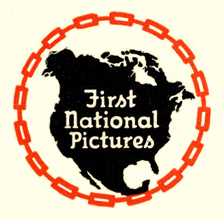
First National Pictures was an American motion picture production and distribution company. It was founded in 1917 as First National Exhibitors' Circuit, Inc., an association of independent theatre owners in the United States, and became the country's largest theater chain. Expanding from exhibiting movies to distributing them, the company reincorporated in 1919 as Associated First National Theatres, Inc. and Associated First National Pictures, Inc.

Sergei Mikhailovich Eisenstein was a Soviet film director, screenwriter, film editor and film theorist. He was a pioneer in the theory and practice of montage. He is noted in particular for his silent films Strike (1925), Battleship Potemkin (1925) and October (1928), as well as the historical epics Alexander Nevsky (1938) and Ivan the Terrible. In its 2012 decennial poll, the magazine Sight & Sound named his Battleship Potemkin the 11th-greatest film of all time.
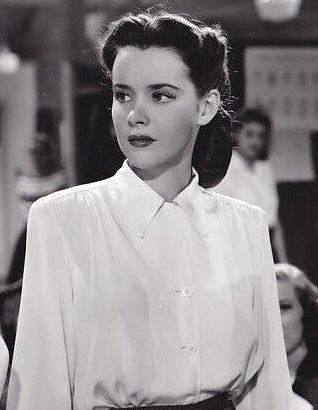
Susan Peters was an American actress who appeared in over twenty films over the course of her decade-long career. Though she began her career in uncredited and ingénue roles, she would establish herself as a serious dramatic actress in the mid-1940s.

Nordisk Film A/S is a Danish entertainment company established in 1906 in Copenhagen by filmmaker Ole Olsen. It is the fourth-oldest film studio in the world behind the Gaumont Film Company, Pathé, and Titanus, and the oldest studio to be continuously active.
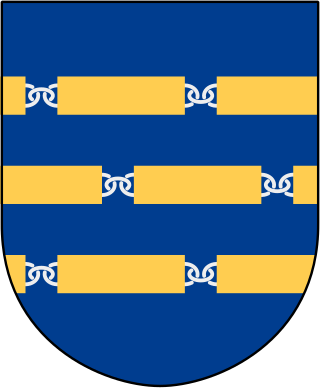
Stocksund is an upper class suburb in Metropolitan Stockholm, Sweden.
Sandrew Metronome is a Scandinavian film distribution company formed in the 1990s. It was one of the biggest distributor companies in the Nordic countries. Sandrew Metronome was established by the Swedish company Sandrews and the Danish Metronome. Later the Norwegian media company Schibsted acquired Metronome and became joint owner with Sandrews. Schibsted gained sole ownership in 2006, but later divested its holdings of Sandrew Metronome to a group of investors and its former CEO in 2013.

The Film Daily was a daily publication that existed from 1918 to 1970 in the United States. It was the first daily newspaper published solely for the film industry. It covered the latest trade news, film reviews, financial updates, information on court cases and union difficulties, and equipment breakthroughs.

¡Que viva México! is a film project begun in 1930 by the Russian avant-garde director Sergei Eisenstein (1898–1948) under contract to socialist author Upton Sinclair and other supporters in the United States. It would have been an episodic portrayal of Mexican culture and politics from pre-Conquest civilization to the Mexican Revolution. Production was beset by difficulties and was eventually abandoned. Jay Leyda and Zina Voynow call it Eisentein's "greatest film plan and his greatest personal tragedy".

Friday TV creates and distributes television formats. Friday TV also provides production and consulting services to television production companies and broadcasters worldwide.

Endemol Shine Group B.V. was a Dutch production and distribution company of scripted and non-scripted content, responsible for programmes such as Big Brother, Deal or No Deal, The Money Drop, Fear Factor, MasterChef, Your Face Sounds Familiar, Peaky Blinders, Black Mirror, Humans, Grantchester and Tin Star.

Endemol Shine Nordics is a Nordic media company specializing in film and television production. In 2009, it was bought by the British company Shine Group for £60 million, which was in turn sold to the American News Corporation.

Heu-Heu; or, The Monster is a novel by H. Rider Haggard. Allan Quatermain tells the story of a monster in Rhodesia.
Shine Group was an international television production and distribution group with 26 production companies across 12 countries creating scripted and non-scripted content in the global marketplace.

Private Karlsson on Leave is a 1947 Swedish comedy film directed by Gösta Bernhard and Hugo Bolander and starring Gus Dahlström, Holger Höglund and Fritiof Billquist. It was shot at the Imagoateljéerna Studios in the Stockholm suburb of Stocksund. The film's sets were designed by the art director Arne Åkermark. It was one of eight films in a series featuring the military conscript Mandel Karlsson based on the an comic strip.
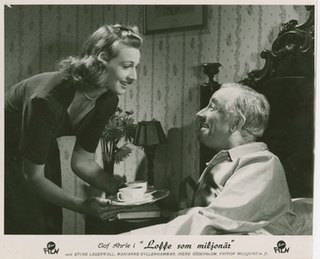
Loffe as a Millionaire is a 1948 Swedish comedy film directed by Gösta Bernhard and starring Elof Ahrle, Sture Lagerwall and Irene Söderblom. It was shot at the Imagoateljéerna Studios in the Stockholm suburb of Stocksund. The film's sets were designed by the art director Nils Nilsson. It was a sequel to the film Loffe the Tramp released earlier the same year.
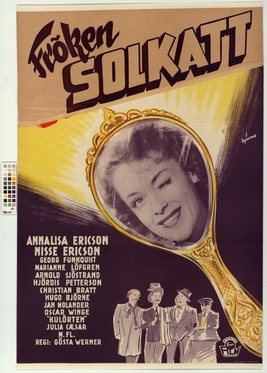
Sunshine is a 1948 Swedish drama film directed by Gösta Werner and starring Annalisa Ericson, Nils Ericsson and Georg Funkquist. It was shot at the Imagoateljéerna Studios in the Stockholm suburb of Stocksund. The film's sets were designed by the art director Nils Nilsson.

Paradise is a 1955 Swedish drama film directed by Arne Ragneborn and starring Edvin Adolphson, Gunnel Broström and Eva Dahlbeck. It was shot at the Stocksund Studios in Stockholm. The film's sets were designed by the art director Carl Gyllenberg.

The Vicious Breed is a 1954 Swedish crime drama film directed by Arne Ragneborn and featuring Ragneborn, Carl-Olof Alm, Sif Ruud and Inga Gill. It was shot at the Stocksund Studios in Stockholm.

Line Six is a 1958 Swedish thriller film directed by Bengt Blomgren and starring Margit Carlqvist, Åke Grönberg and Inger Juel. It was shot at the Metronome Studios in Stocksund and on location in Gothenburg and Stockholm. The film's sets were designed by the art director Nils Nilsson.

The Green Lift or Going Up by the Green Lift is a 1952 Swedish comedy film directed by Börje Larsson and starring Stig Järrel, Annalisa Ericson and Gunnar Björnstrand. It was shot at the Stocksund Studios in Stockholm and on location around the city. The film's sets were designed by the art director Bibi Lindström. It is based on the Broadway play Fair and Warmer by Avery Hopwood, which had previously been adapted into a 1944 Swedish film The Green Lift also directed by Larsson.



















